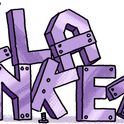If you are one of the 800m users of ChatGPT, you may have noticed that the chatbot seems to be developing a distinctive “voice”—favoured words, an identifiable tone, recognisable ways of starting sentences and even salient punctuation marks, like the em dash symbol I used to introduce this list. The language of generative AI, which we might call “AI English”, still needs rigorous investigation, and I am starting a project at Oxford to do just that. But we can already spot some patterns.
AI English is not confined to OpenAI’s ChatGPT. All generative AI chatbots, such as DeepSeek, Google’s Gemini, Anthropic’s Claude and xAI’s Grok, display patterns in their output. When analysed at scale, they show an inclination towards certain words: delve, crucial, unlock, ensure, explore, tapestry, testament and leverage. Demonstratives (this, these, that, those), the definite article, “remember” at the start of sentences and expressions such as “if you’re anything like me” and “in today’s world” are used in abundance. The tone is optimistic, eager to please and shies away from offending, usually offering noncommittal and anodyne opinions. There is an aversion to single sentence replies, bordering on the verbose.
All chatbots display artefacts of the way foundational large language models are built: trained on vast datasets containing symbols and punctuation marks usually confined to professionally printed material. Out of all these symbols, the em dash is a hallmark of a published source. Sometimes called a dramatic dash, long hyphen or em-rule, the symbol first appeared in the plays of Ben Jonson and can be found in some quarto editions of Shakespeare’s plays and in the First Folio. It was later introduced into other literary forms in the 17th century to convey a significant pause or interrupted discourse, reinforcing the illusion of real speech. Nowadays, the em dash is used in myriad ways from setting off an example to introducing a list to replacing parentheses. Its name comes from the world of the printing press: the line is the width of a letter m, as opposed to the slightly shorter en dash, which is the width of the letter n.
What makes em dashes—or “ChatGPT hyphens” as some now call them—such a dead giveaway that somebody is using a chatbot? The answer is that it’s not easy to find them on a modern keyboard, let alone on your phone. On a Mac you need to hold down three keys (Option, Shift and Minus), while on Windows you must press the Alt key followed by 0151. If you see someone on social media has begun using em dashes with abrupt enthusiasm, chances are slim that they’ve gained a new appreciation of Shakespeare—what’s more likely is they are just using AI to write on their behalf. How ironic, that a punctuation mark once designed to increase the verisimilitude of speech is now a sign that something is written by a machine.













